To be energy efficient, a new technology must provide the same quality of service and perform the same task as the previous technology. To be able to compare the quality of the light, we first need to define the task, such as illumination of an indoor kitchen versus outdoor illumination of a roadway. Once the task is defined, we can decide which attributes of light, such as uniformity of distribution, spectral power distribution, flicker characteristics and Color Rendering Index, are used to define the quality of the light for that specified task.
Definitions
Point Source: Examples include the sun, a candle, incandescent, and High-Pressure Sodium. Brightness measured with luminous intensity in candela. Uniform energy. “point” means mathematical point.
Surface Source: Examples include LED and laser. Brightness measured with luminance in nits (candela per square meter). Non-uniform energy. “surface” means flat, non-curved surface.
Energy Efficiency: Providing the same quality of service using less energy.
Color Rendering Index: A scale from 0 to 100, with 100 meaning that the reflected color off an object is a perfect match to sunlight reflecting off the object.
Tasks
Outdoor roadway Illumination – Quality is providing uniform spatial illumination, low glare, low blue wavelength, smooth spectral power distribution, appropriate peak luminance.
Indoor kitchen illumination – Quality is providing uniform spatial illumination, low glare, smooth spectral power distribution, high Color Rendering Index, appropriate peak luminance.
Energy Efficiency
Quality illumination requires uniform light such as provided by incandescent and High-Pressure Sodium. A laser beam does not provide the same quality of illumination as incandescent, so lasers cannot be called energy efficient. Similarly, LEDs do not provide the same quality of light as incandescent because LED light is a narrowly focused, non-uniform beam. Thus, LEDs are not energy efficient as claimed by the industry because they do not provide the same quality of service as incandescent and HPS.
Incandescent versus LED
Incandescent refers to heating a filament, causing light to escape by incandescence in all spherical directions with essentially the same energy. LEDs are a flat surface and the light escapes in overlapping cones, creating a non-uniform energy shape. The result is that the shape of incandescent light is like a uniform marble, whereas the shape of LED light is like a bullet. This bullet-shaped light is not providing the same service or performing the same task as spherically shaped light, so the claim that LEDs are more energy efficient than incandescent is fraudulent.
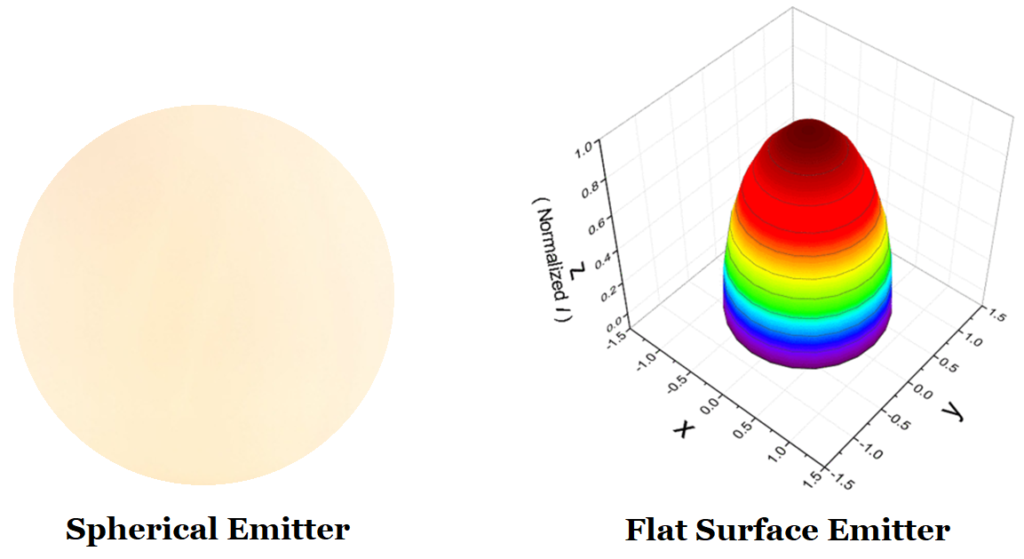
Definition of Energy Efficiency
The key to the LED Fraud is the claim that LEDs are energy efficient. So what is the definition of “energy efficient”? As is shown below, the basic premise for energy efficiency is to use less energy for the same level of service.
- United States Department of Energy – “Simply put, energy efficiency means using less energy to get the same job done.”
- West Virginia Department of Environmental Protection – “Energy efficiency means using less energy to accomplish the same task“
- Environmental and Energy Study Institute – USA – “Energy efficiency simply means using less energy to perform the same task.”
- United Kingdom Department of Energy and Climate Change – “On a technical level, energy efficiency is the relationship between the energy consumed and the output produced by that energy, often called ‘energy services’, for example the number of miles travelled for a gallon of fuel. Increasing energy efficiency means using either less energy to provide the same level of energy services, or using same level of energy to provide a higher level of energy services.“
- Law Insider – Energy Efficiency means a decrease in customer consumption of electricity or natural gas achieved through measures or programs that target customer behavior, equipment, devices, or materials without reducing the quality of energy services.
For example, does anyone claim that laser beams provide the same level of service as an incandescent light bulb? Of course not. Laser beams are not good for illuminating a room. While lasers emit light, the light is not spread uniformly in space. Similarly, LEDs emit a bullet-shaped light with non uniform energies which is also not good for illuminating a room. LEDs produce a low quality light and thus do not meet the definition of energy efficiency.
An excellent article on the truth about energy efficiency claims is a 2018 article titled Bedazzled by Energy Efficiency
Examples of Energy Efficiency
Energy efficiency means performing the same job using less energy.
Example 1: A motor vehicle with an Internal Combustion Engine travels 15 miles on one gallon of gas. Engineers redesign the combustion chamber with a hemispherical top, resulting in less wasted energy and an increase to 20 miles of travel on one gallon of gas. The same job is performed, but using less energy, so the new technology is energy efficient.
Example 2: The water in a hot tub is heated by burning wood in an open fire underneath the hot tub and it takes 3 chords of wood to heat the water to 105 degrees Fahrenheit. The system is redesigned to enclose the fire and direct more of the heat to the bottom of the hot tub so that it only takes 2 chords of wood to heat the water to 105 degrees. The same job is performed, but using less energy, so the new system is more energy efficient than the old system.
If the new technology performs a different job, then a claim of energy efficiency cannot be made.
Example 3: A water purification machine uses 100 watt-hours of energy to produce 75 gallons of water that is 99.9% free of bacteria. A new technology machine uses 50 watt-hours of energy to produce 75 gallons of water, but the water produced is only 30% free of bacteria. The new technology did not perform the same job, so the new technology is not more energy efficient than the previous technology.
Example 4: An elevator uses 1,000 joules to carry 5 passengers to the 4th floor and open the door to let the passengers out. A new elevator design uses 600 joules to carry 5 passengers to the 4th floor, but the new design does not allow the doors to open and the passengers remain stuck inside. The new technology is not more energy efficient than the previous technology because it doesn’t have the same functionality.
Example 5: A light bulb uses 60 watts to illuminate a room with uniform light. A new technology uses 10 watts to illuminate the room, but the light is not uniform, and people feel sick while in the room. The new technology is not more energy efficient than the previous technology because it does not provide the same service and results in more harm than the previous technology.
Fraudulent Claim of Energy Savings
The sun, an incandescent light bulb, and a High Pressure Sodium lamp all emit uniform visible radiation to perform the task of illumination. LEDs cannot “save” energy because LEDs do not perform the same function as previous technologies. Rather, LEDs emit a a bullet shaped beam of non uniform low quality light that is toxic, hazardous, discriminatory, and not fit for the purpose of illumination.
The LED Cartel claim that LEDs are energy efficient or save energy as compared to incandescent, fluorescent, or HPS is fraudulent. There is no “savings”, just a different shape of radiation which causes eye damage, epileptic seizures, migraines, panic attacks, increased light pollution, anger, and agitation. This fraudulent claim is no accident and was purposely created by the LED Cartel.
What the LED Cartel did was to drop from the definition of energy efficiency the words “provide the same service” and they created their own invalid definition of energy as “uses less energy.” The LED Cartel compares only the amount of light generated by an emitter, measured in lumens per watt, and they purposely fail to compare the quality of the light output in terms of shape, spectral distribution, or amount of flicker. As we know, the bullet shape, the large spike of blue wavelength light, and the sub-sensory flicker causes people to be sick. The entire multi-billion dollar switch to LED technology is based on the fraudulent claim that LEDs save energy.
The result of the fraudulent claim that LEDs save energy has been a worldwide switch to LED technology resulting in inferior lighting, massive destruction of the natural night resource, an overall increase in energy use due to the huge increase in number of emitters, and injury and discrimination, especially for those who are light sensitive. The fix to all of this is for government entities to eliminate LED lights for public safety reasons, and for law firms to hold the LED Cartel responsible through legal actions.
Illumination Standards
History and case law show us that references to light refer to uniform radiation in the human-visible portion of the electromagnetic spectrum. For regulatory purposes, light and illumination do not refer to particle radiation, x-rays, microwaves, or non-uniform visible radiation from a flat surface such as lasers and Light Emitting Diodes. Figure 2 illustrates this concept.
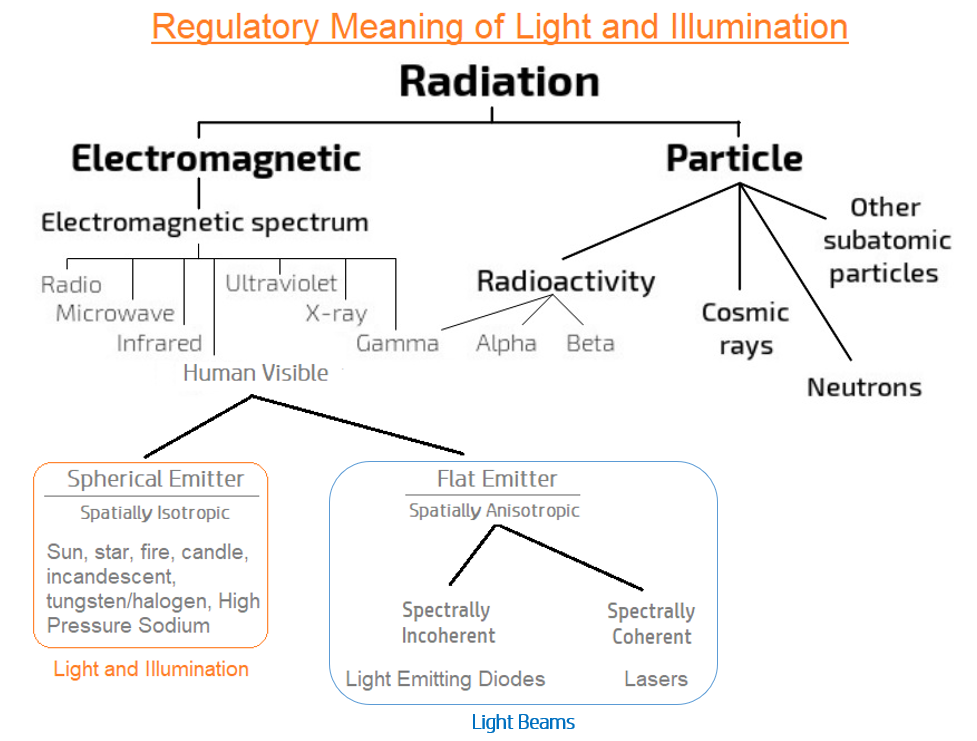
A spherical emitter sends light in all directions in space. Because of the curvature of the emitter, the light rays do not overlap and the radiation is spatially uniform. A flat surface emitter, such as an LED, sends light only in the forward direction. The light rays are confined to an ‘escape angle’ which is determined by the physical characteristics of the chip. There are thus overlapping rays, with the most overlap being in the center of the chip, and the least overlap being on the edges. The result is that every point in space has different energies. This bullet-shaped energy profile is not suitable for illumination and not compatible with the human nervous system. An energy efficiency comparison between an incandescent and an LED cannot be made.
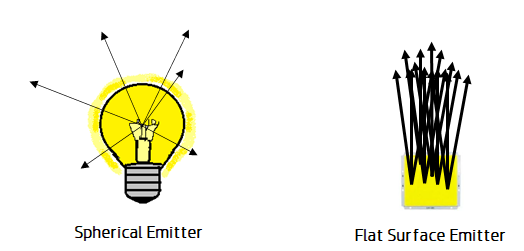
The left side of Figure 4 shows the light distribution for an HPS streetlight. The light lands uniformly on the ground over a wide area. The middle drawing of Figure 4 shows the light pattern that the LED Cartel claims that LEDs produce, which is the same uniform distribution of light, but in a narrower beam. If this were true, then LEDs really would be saving energy. However, the middle drawing is not how LEDs distribute light. The right side of Figure 4 shows that there is indeed a narrow beam of light, but that light is non uniform. At each angle there is a different energy, with the peak energy being directly out from the center of the LED chip. Since the energies are not uniform and shaped like a bullet rather than a ball, the LED is not providing the same service as HPS and therefore an energy savings claim cannot be made.
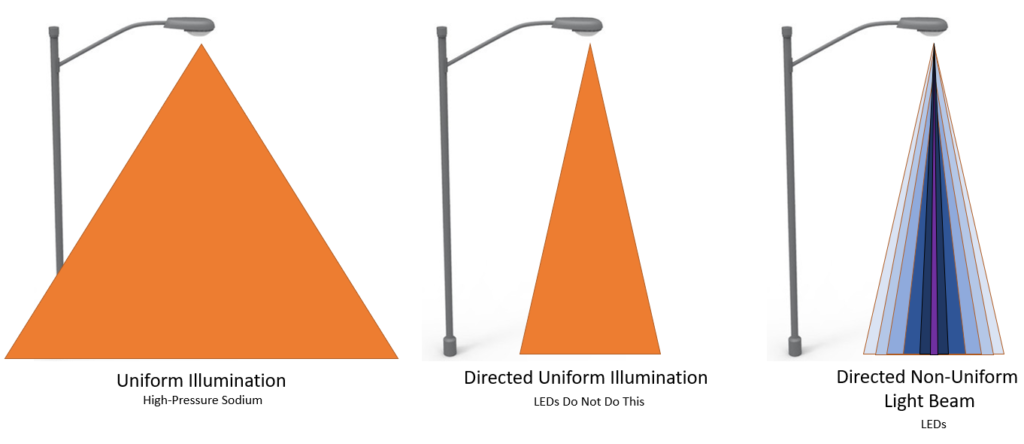
Figure 5 shows a luminous efficacy comparison between different light sources. Notice that only LED has non-uniform luminance. An energy efficiency comparison cannot be made between the uniform luminance light sources and the non-uniform luminance light sources because they are different services.
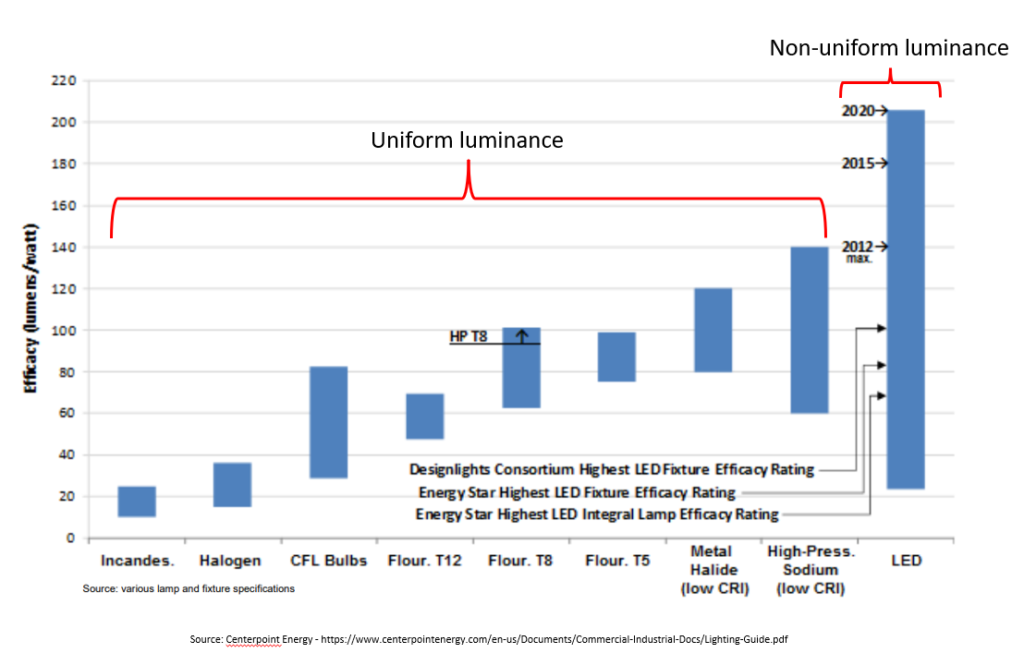
Figure 6 is a diagram from the utility company Evergy showing that the utility companies know that LED light is non-uniform.
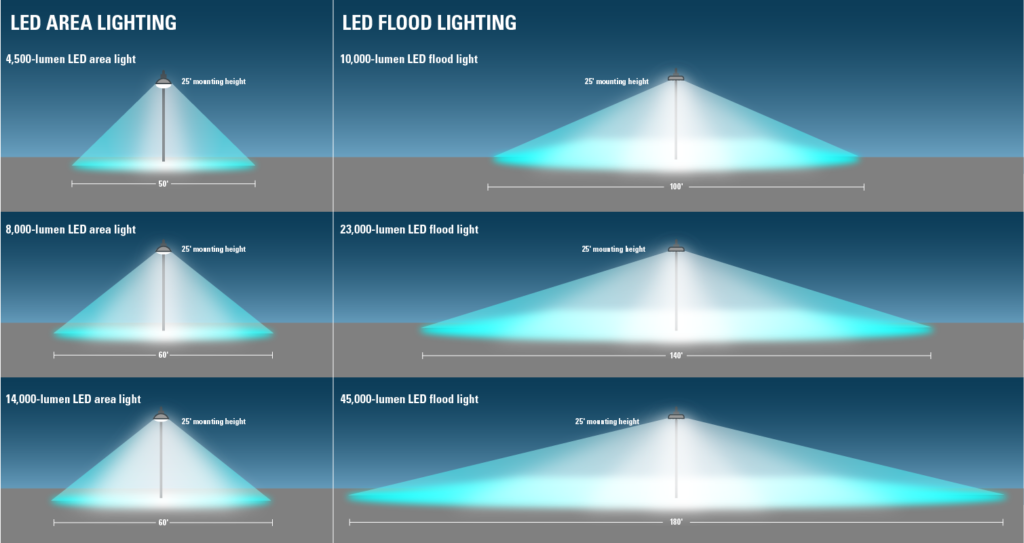
The article The Influence of LED Emission Characteristics on the Efficiency of Lighting Systems discusses how the radiation from a flat surface emitter is a Lambertian shape, with the peak intensity at zero degrees. In the article, there is a diagram showing the emission from an LED. However, while the article itself makes it clear that the LED emits a Lambertian shape, the diagram on the left in Figure 5 does not make clear the difference in intensity. To make the concept more clear, we have added thicker arrows on the right side of Figure 5 to indicate that the intensity at 0 degrees is much more than the intensity at 45 degrees.

A standard High-Pressure Sodium streetlight emits light in all directions uniformly. The LED Cartel claims that LED radiation devices produce a directed energy that controls the distribution of the light better. The truth is that LED radiation devices produce light in a bullet shape, and thus the light from the middle of the chip can be 100,000,000 nits, while the edges can be a miniscule fraction of that.
IES RP-8-18
The Illuminating Engineering Society is the front organization for the LED Cartel. IES publishes the standards for roadway and parking lot lighting and the document IES RP-8-18 is the de-facto standard for the industry. In the IES RP-8-18 document, IES claims that LEDs are “point sources” of light, as shown in Figure 6. This is a fraudulent claim.

As per Dr. Nisa Khan, “Flat light sources produce Lambertian light distributions and only flat light sources do this. This means that luminous intensity and luminance are both non uniform in space for the source and what the viewer sees. ALL of illumination scientific theories are based on point light sources, which means there is spherical uniformity for luminance and luminous intensity regarding the light source and what the viewer sees.” – February, 2022 – Dr. M. Nisa Khan, President IEM Lighting Technologies and Author, Understanding LED Illumination.
In other words, the IES fraudulently claims that LEDs are point sources, when it is impossible. LEDs are not more energy efficient than High-Pressure Sodium because LEDs are not point sources. LEDs emit a bullet-shaped beam of light which is providing a different service than a uniform emitter such as HPS.
Energy Efficiency Methods for Lighting
There are several methods that can used to save energy related to use of artificial light.
- Turning the light off reduces the amount of energy used to zero and is the most energy efficient method available.
- Replace 100 watt HPS with 50 watt HPS. The same service of uniform illumination will be provided, but with a 50% energy savings.
- Reduce operating time. Instead of turning on the streetlights from half an hour before dusk to a half hour after sunrise, only turn on streetlights from half an hour after dusk until 10pm. This action will result in over 50% energy savings.
- Reduce the number of emitters by half. This will result in a 50% energy savings.
- Switch to energy efficient Low Pressure Sodium for streetlighting.
Uniformity
The LED Cartel claims that LED light is uniform, but directed. The images in Figure 7 attempt to show that an LED devices has exceptional uniformity. However, we already know that LEDs are directional and not uniform, so why does the graph on the right appear to show that an LED has better uniformity than an LED? The answer is that the measurements taken for the LED did not use a sensitive enough instrument with precise enough detail. If proper sensitivity were used, such as at the femtometer scale and in near-field approximately 1 micrometer from the flat surface of the LED chip, the graph would show orange inside the yellow, red inside the orange, some other color inside the red, and yet another color inside of that. This graph is therefore incorrect and cannot be used to make any claim that LED light is uniform or that LEDs provide the same service as incandescent.
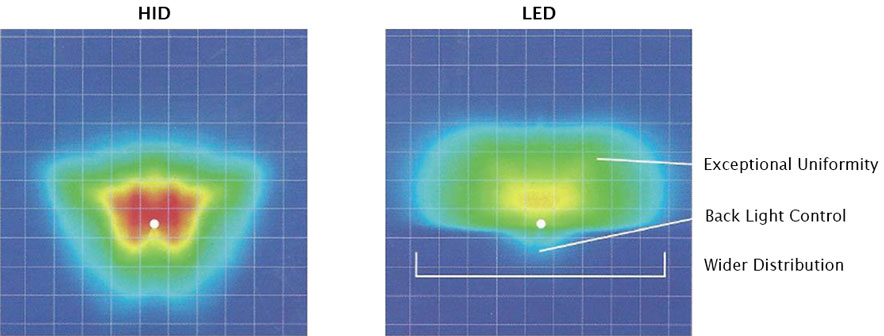
Energy Comparisons
The chart in Figure 8 shows power use in watts for incandescent, compact fluorescent and LED lamps. Incandescent lamps emit light uniformly in space, with a smooth spectral power distribution from low blue to high red. Compact Fluorescent lamps uses less power, but no longer generates a smooth SPD. LEDs do not emit a bullet-shaped light that is non uniform in space, and LEDs do not emit a smooth SPD. As we compare the suns’ spatial, spectral and temporal properties to artificial technology inventions, we see that the improvements in energy use come at the expense of the quality of the emitted radiation.

Figure 8 shows that Luminous efficacy has increased over time with evolving technologies, but this efficacy has come at the cost of light quality. Compact Fluorescent light was worse than Incandescent because of the jagged shape of the spectral power distribution. LED light is worse than both compact fluorescent and incandescent because of the large spike of blue wavelength light and because of the bullet-shape of the light. The claim that LEDs are more energy efficient than incandescent cannot be made solely on the lumens per watt ratio. An energy efficiency comparison can only made when two products provide the same service.
Overall luminous efficacy is the ratio of how many photons are emitted per watt of power. The chart in Figure 9 shows that, even disregarding the shape of the radiation, a High Pressure Sodium lamp has a luminous efficacy of anywhere from 85 to 150 lumens per watt, and a Low Pressure Sodium lamp is 100 to 200 lumens per watt. An LED for a streetlight ranges from 60 to 120 lumens per watt. If LEDs are no more efficient than HPS or LPS, then why have cities spent hundreds of millions of dollars switching to such a toxic, hazardous, discriminatory, and inferior product?

Heat
LEDs are cold-light sources as they emit light, but practically no UV or IR radiation. The emitted light is cold and does not heat up illuminated objects. The LED does, however, heat up through the light creation process. Up to 85% of the energy is converted into heat.1 2 Where is the energy efficiency, then, if 85% of the input energy is converted into heat?
Neuroplasticity
The myth that LEDs are energy efficient is now well established in our collective mind. It will now take years of repeated exposure to the truth to unlearn that myth. Neuroplasticity shows us that we can unlearn something, but it takes time and it is difficult. LEDs are not energy efficient.
Department of Energy
The US DOE finalized two rules in April, 2022 that will effectively ban incandescent in favor of LED. Here is our letter formally requesting an appeal of these rules. Letter. May 29, 2022
Footnotes
1 – Hella
2 – LEDs Magazine